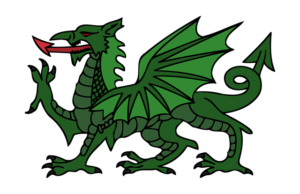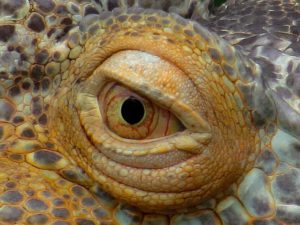The Evolution of Dragons (or Sometimes a Story is a Sword)
Fairy tales have evolved. Have you noticed?
I remember thinking that twenty years back when I read a library book to my children about The Gingerbread Man. Do you remember him? “Run, run, as fast as you can! You can’t catch me, I’m the Gingerbread Man.”
In my childhood, the gingerbread man ran from the childless couple who baked him. He kept running from all pursuers, believing himself smarter and faster than everyone else. Finally, the fox outwitted and devoured him. Lesson learned. Don’t run away from your loving home because dangers await those who think they know better.
In my children’s generation’s version, the gingerbread man gets eaten but on the last page, somehow miraculously escapes the stomach of the fox! He learns a wise lesson about the danger of running away but there are no real consequences for his actions.
What? It even annoyed my kids. “That makes no sense. Why would someone even write that story?” my son asked. I wondered that, too.
When I was a child, fairy tales were a little frightening – children who disobeyed, wandered, or were lazy were cooked in witches’ stoves, lost in the woods, eaten by wolves, or missed out on meals and fun. They were, in fact, stories that trained the heart to recognize danger in real life – the danger of disobedience, of wandering from the truth, of trusting dark forces one meets on the run. In the world of my children’s sanitized fairy tales, disobedient children endure “a bit of a fright” but always have second chances or are rescued at the last minute. Whew. No need to worry about a little disobedience. The story always ends well. Not a kind lesson to teach children.
 I thought about this again, ten year’s later when I stood in the children’s book section to find gifts for my nephews. The shelves were full of dragons.
I thought about this again, ten year’s later when I stood in the children’s book section to find gifts for my nephews. The shelves were full of dragons.
I’d never seen so many dragons. They were ornate, bejeweled, intricately designed, and beautiful. But what struck me most about this bevy of beasts was that they were primarily tame. Not only tame, but friendly – some even downright heroic.
Dragons have always fascinated me and I think there should be a dragon in every children’s tale – but dragons are never tame and, traditionally, they are there to be conquered, not befriended. In Biblical literature, the dragon represents the evil one – the one who comes against Christ and the church. In Revelation 12, Michael, the archangel defeats the dragon. “Then war broke out in heaven. Michael and his angels fought against the dragon, and the dragon and his angels fought back. But he was not strong enough, and they lost their place in heaven. The great dragon was hurled down—that ancient serpent called the devil, or Satan, who leads the whole world astray. He was hurled to the earth, and his angels with him.”
He is a very clever dragon. He has learned the perfect lie for each generation.
In earlier generations, the dragon fed on people’s anxieties. He terrorized them and convinced them he was powerful and they could not defeat him.
 In later generations, the dragon fed on people’s avarice by enticing them with his great stores of the promised treasure he protected in his lair.
In later generations, the dragon fed on people’s avarice by enticing them with his great stores of the promised treasure he protected in his lair.
 A more recent generation, surrounded by anarchy, yawned with apathy as it shared a puff of the dragon’s favorite pipe and leaned its head against the dragon’s breast to watch the light dance off his scales.
A more recent generation, surrounded by anarchy, yawned with apathy as it shared a puff of the dragon’s favorite pipe and leaned its head against the dragon’s breast to watch the light dance off his scales.
In this generation, the dragon feeds on our arrogance and convinces us that we can tame him, that we can make him our friend. We sit at his table to have talks, discussing the details of a brokered peace.
The dragon lies.
He lies to us and he lies to our children. He lies so well, we feed the lie to our children with their bedtime milk and cookies. “Woe to those who call evil good and good evil, who put darkness for light and light for darkness, who put bitter for sweet and sweet for bitter. Woe to those who are wise in their own eyes and clever in their own sight.” (Isaiah 5:20-21)
Some of you will argue with me that I’m just talking about stories. That I shouldn’t be concerned about children’s fairy tales and book series read by schoolchildren. And, of course, I’m not declaring that every story told with a friendly dragon is evil or wrong. Let imagination take flight. Imagine dragons, by all means, but tread carefully on a symbol God has used for the evil one.
I will tell you what the dragon knows: story is the key to the treasure store of our hearts and our imaginations. Once he enters there, he can weave a web of lies so finely entwined with our own neural pathways we believe the thoughts and ideas are our own. When children nurse on lies from the cradle, they cannot tell from the truth as they grow. When they ingest the truth with their mother’s milk, they develop an appetite for truth that cannot be satisfied with falsehood.
Stories are sippy cups for truths that are so powerful and real they can slay dragons. Fiction is just truth with wings. It’s not wrong to weave a tale and it’s not even wrong in those tales to befriend a dragon as long as we remember that the truth is – dragons are never, never tamed.
it’s not even wrong in those tales to befriend a dragon as long as we remember that the truth is – dragons are never, never tamed.
So do write a dragon into every story – whether for children or those who think themselves grown – but never think him tame enough to turn your back on him.
Remember, a story is never just a story. Sometimes a story is sword.
The Evolution of Dragons (or sometimes a story is a sword) https://t.co/8dgcnXqNUg#dragons#amwriting#amwritingfantasy
— Lori Roeleveld (@lorisroeleveld) August 3, 2016
I’d LOVE to hear your comments so if you’re reading this in email, CLICK HERE to comment!




